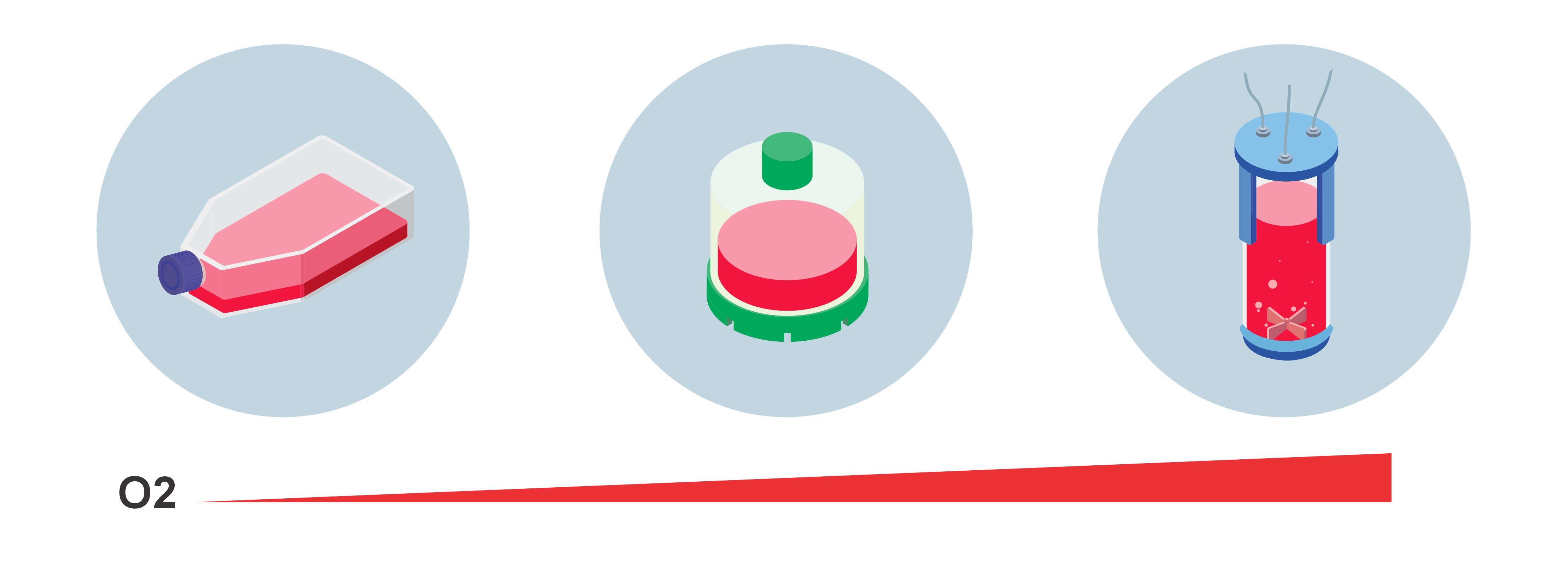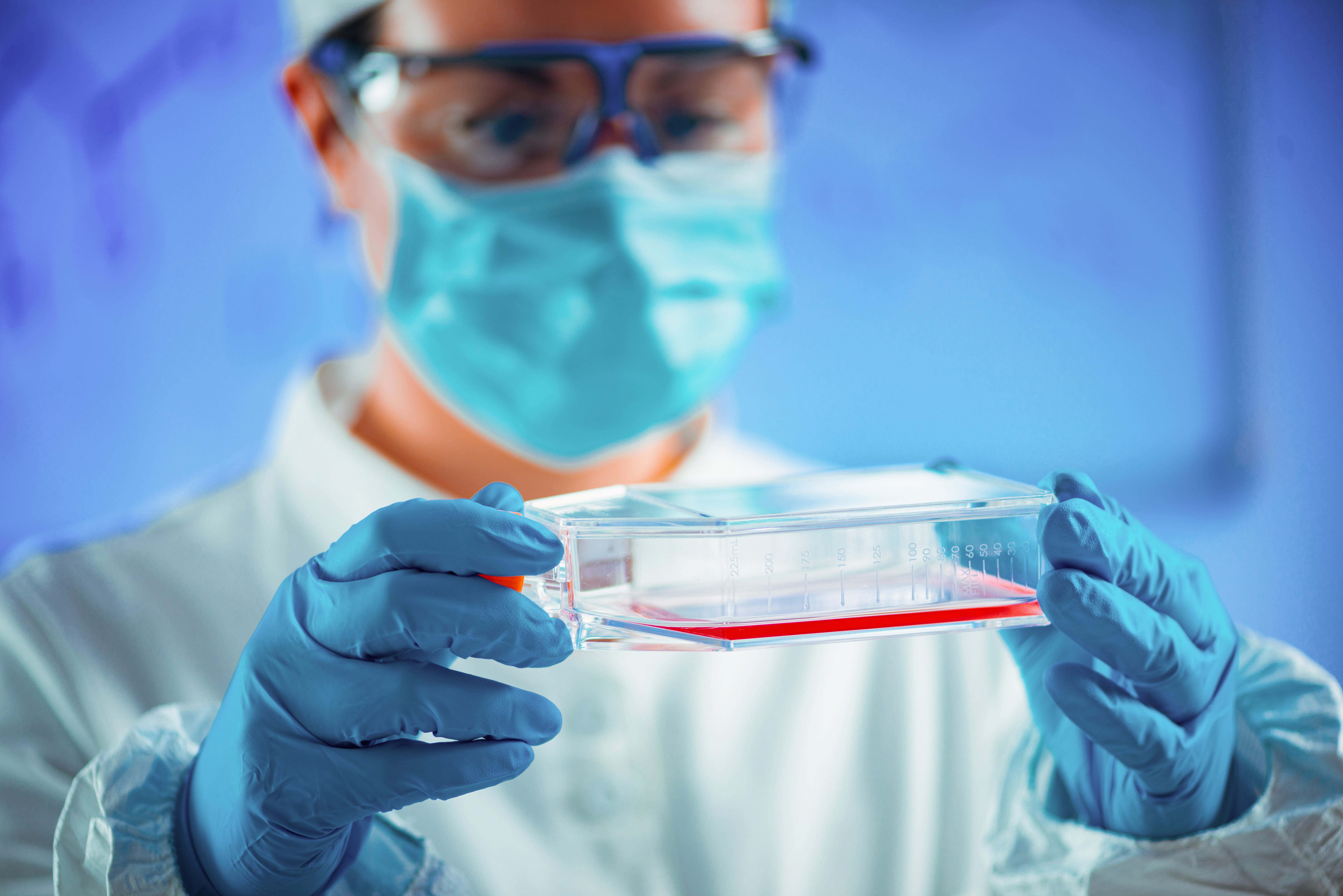Cell culture is at the heart of cell therapy manufacturing. Cells need to be modified and expanded before using them to treat patients. When we grow cells for advanced cellular therapies, getting the environment just right is key to making sure the cells are healthy and effective. Two gases, oxygen (O2) and carbon dioxide (CO2), play a crucial role in this process. They help keep the cells alive, growing, and functioning well. But if the levels of these gases aren’t carefully controlled, the cells may not develop properly, which could affect the success of the therapy.
Oxygen: Fuel for Cells

Just like we need oxygen to breathe, cells need oxygen to grow and produce energy. In cell therapy, cells such as T cells use oxygen to produce energy, which helps them grow and divide. However, too much oxygen can be harmful—it can damage the cells by causing oxidation. On the other hand, if there’s not enough oxygen, the cells can’t grow properly, which can reduce the number of cells available for therapy.
The tricky part is that oxygen isn’t very soluble in liquid, so it doesn’t always get to all the cells evenly. This is why monitoring and controlling oxygen levels in the cell culture environment is so important to ensure the cells are healthy and growing as expected.
Carbon Dioxide: The pH Balancer
Carbon dioxide plays a different role. It helps control the pH levels in the liquid where the cells grow. Maintaining the right pH is important because if the liquid becomes too acidic or too basic, it can stress the cells and slow down their growth. CO2 helps keep the pH balanced, usually at a level that is perfect for the cells to thrive. If CO2 levels get too high, it can make the environment too acidic, and if the CO2 levels drop too low, the environment may become too basic, both of which are harmful to the cells.
Different Containers, Different Outcomes

How these gases interact with cells depends a lot on the type of container used for cell culture during advanced therapy manufacturing. Cells can be grown in a variety of systems, from simple dishes to bioreactors. Each type of container affects how well oxygen and CO2 reach the cells.
- Flasks or Dishes (Static Systems): In basic dishes or flasks, oxygen and CO2 mainly reach the cells through diffusion, which means the gases spread out slowly. This can create uneven levels of oxygen and CO2, with some cells getting plenty of oxygen while others get less. This uneven distribution can lead to differences in how well the cells grow.
- Gas-Permeable Systems: More advanced systems, such as special bags or dishes with gas-permeable membranes, allow gases to move more easily to the cells. This helps ensure that all the cells get the oxygen they need to grow, even in larger volumes.
- Bioreactors: In large-scale cell production, bioreactors are used. These containers have built-in systems to control how much oxygen and CO2 the cells receive. Some bioreactors use methods like gentle mixing or bubbling gases into the liquid to ensure the cells are getting enough oxygen. However, these systems must be fine-tuned to avoid damaging the cells with too much agitation or oxygen.
What Happens When Oxygen Levels Are Too Low?
Interestingly, sometimes less oxygen can be helpful. Some studies have suggested that when cells like T cells are grown in low oxygen conditions, they may develop in ways that make them more effective for therapies. In fact, lower oxygen levels can help create more “memory” T cells, which are longer-lasting and more likely to stay active in the body after the therapy is administered (https://www.ncbi.nlm.nih.gov/pmc/articles/PMC6562712/) https://www.isct-cytotherapy.org/article/S1465-3249(24)00091-4/fulltext. This can lead to better results for patients, particularly in cancer treatments like CAR-T cell therapy. However, both studies show that levels of proliferation also decrease in low oxygen conditions, suggesting a balance is necessary to achieve the desired outcome.
Additionally, short-term exposure to low oxygen levels during the early stages of cell growth can trigger beneficial changes in the cells, making them more effective in attacking tumors later on (https://elifesciences.org/articles/84280).
Conclusion
Oxygen and carbon dioxide may seem like simple gases, but they play vital roles in growing cells for therapies. The type of container used for cell culture can greatly influence how much of these gases the cells get, which in turn affects their growth and effectiveness. And in some cases, carefully controlling oxygen levels can lead to better results for patients, showing just how important it is to get the balance right.

